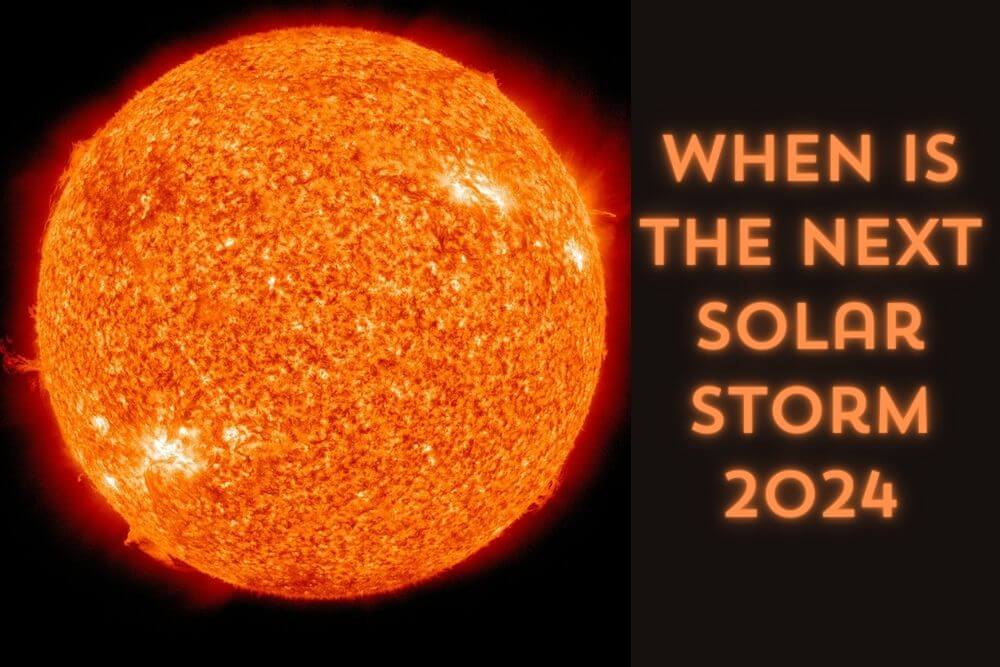When Is the Next Solar Storm in 2024? A Closer Look at Solar Maximum
The sun, our fiery celestial neighbor, is not just a glowing ball of gas; it’s a dynamic and ever-changing entity. One of the most fascinating phenomena associated with the sun is the solar cycle, an approximately 11-year period of solar activity driven by the sun’s magnetic field. During this cycle, the sun goes through phases of increased and decreased activity, affecting everything from space weather to our technological infrastructure.
Solar Maximum: What Is It?
At the heart of the solar cycle lies the concept of solar maximum. This term refers to the peak of solar activity during each cycle. During solar maximum, the sun becomes more active, producing more sunspots, solar flares, and coronal mass ejections (CMEs). These phenomena can have significant effects on Earth and its surroundings.
Revised Predictions for Solar Cycle 25
In 2019, scientists estimated that Solar Cycle 25 would reach its peak (solar maximum) sometime between 2025 and 2026. However, recent observations and advanced modeling techniques have led to a significant revision of this prediction. According to experts at NOAA’s Space Weather Prediction Center (SWPC), Solar Cycle 25 will now reach its peak in 2024, one year earlier than previously expected1.
The revised prediction suggests that solar maximum will occur between January and October 2024. Not only will it arrive sooner, but it will also be stronger and last longer than previously estimated. This change is crucial for understanding space weather and its potential impact on our planet.
The Total Solar Eclipse of 2024
Eclipse enthusiasts have reason to celebrate! The total solar eclipse on April 8, 2024, will coincide with the solar maximum. During totality, when the moon completely obscures the sun’s disk, the sun’s outer atmosphere (known as the corona) becomes visible. This rare event provides a unique opportunity for observers to witness solar prominences—gigantic loops of plasma extending outward from the sun—as bright pink spots at the sun’s edges.
The path of totality for the 2024 eclipse stretches from Texas to Maine in the United States. Eclipse chasers and skywatchers will gather along this narrow track to experience the awe-inspiring moment when day turns into twilight and the sun’s corona dances in the sky2.
Why Accurate Predictions Matter
Accurate predictions of solar activity are essential for several reasons:
- Space Weather Impact: Geomagnetic storms triggered by CMEs can disrupt electrical grids, affect GPS signals, and even pose radiation risks to airline workers and astronauts. Knowing when solar maximum occurs allows us to prepare for potential space weather events.
- Eclipse Timing: The alignment of solar maximum with the 2024 total solar eclipse provides an exciting opportunity for scientists and eclipse enthusiasts alike. Observations made during the eclipse can enhance our understanding of the sun’s behavior.
- Technological Safeguarding: Industries can implement safeguarding procedures to protect equipment and workers during heightened solar activity. Early warnings based on accurate predictions are crucial for minimizing risks.
Looking Beyond 2024
After total solar eclipse in 2024, the subsequent total solar eclipse that will be visible from the contiguous U.S.will occur on August 23, 20443. As we continue to study the sun and refine our predictions, we gain valuable insights into the dynamic processes that shape our solar system.
So mark your calendars for April 8, 2024, and witness the dance of celestial bodies—the sun, the moon, and Earth—as they create a breathtaking cosmic spectacle during the next solar maximum.
Frequently asked questions (FAQs)
What Is Solar Maximum?
Solar maximum refers to the peak of solar activity during the sun’s 11-year cycle. It’s a period when the sun becomes more active, producing sunspots, solar flares, and coronal mass ejections (CMEs).
When Will Solar Cycle 25 Reach Its Peak?
Initially estimated to occur between 2025 and 2026, recent revisions now predict that Solar Cycle 25 will reach its peak in 2024. This change means it will arrive earlier and be stronger than previously thought.
What Can We Expect During Solar Maximum?
During solar maximum, we can expect increased solar activity, including more sunspots and intense solar flares. These phenomena can impact Earth’s space weather and technological infrastructure.
How Does Solar Maximum Affect Space Weather?
Geomagnetic storms caused by CMEs during solar maximum can disrupt electrical grids, affect GPS signals, and pose radiation risks to airline workers and astronauts.
What’s Special About the Total Solar Eclipse in 2024?
The total solar eclipse on April 8, 2024, coincides with the solar maximum. Observers along the eclipse path (from Texas to Maine in the United States) will witness the sun’s corona and solar prominences.
Why Are Accurate Predictions Important?
Accurate predictions help us prepare for space weather events, time eclipses, and safeguard technology and infrastructure during heightened solar activity.
Where can I witness the first total solar eclipse after 2024?
Mark your calendars! The next total solar eclipse viewable from the continental United States won’t happen until August 23, 2044.
Remember to mark your calendars for the 2024 total solar eclipse and marvel at the cosmic dance of celestial bodies!
Learn more about science

